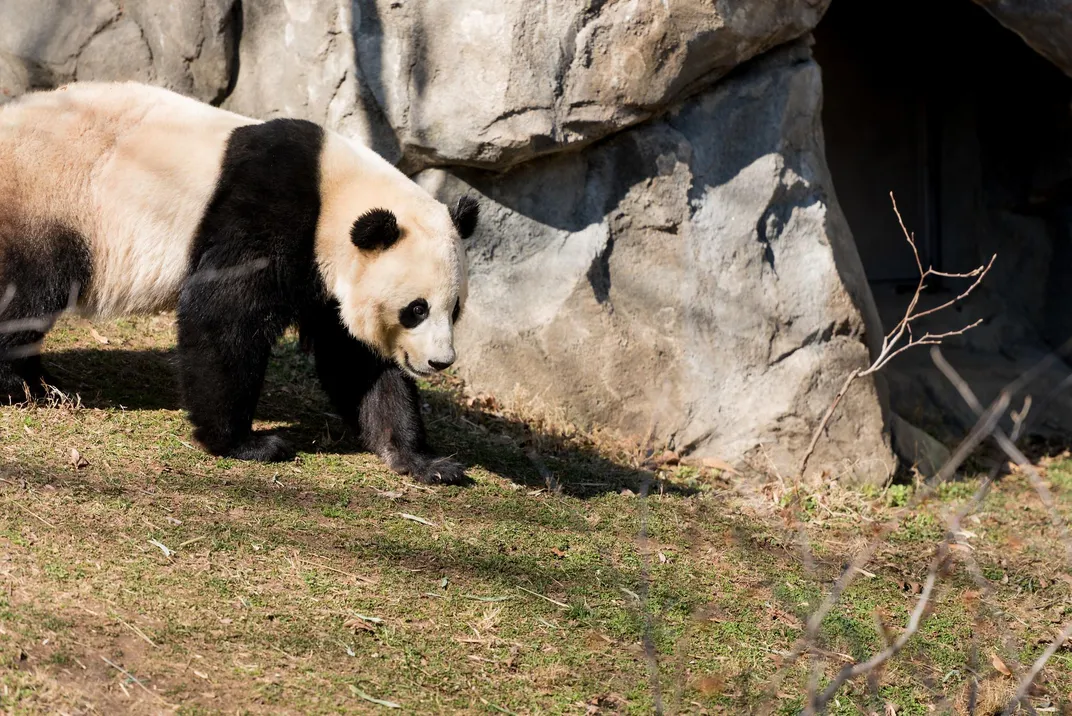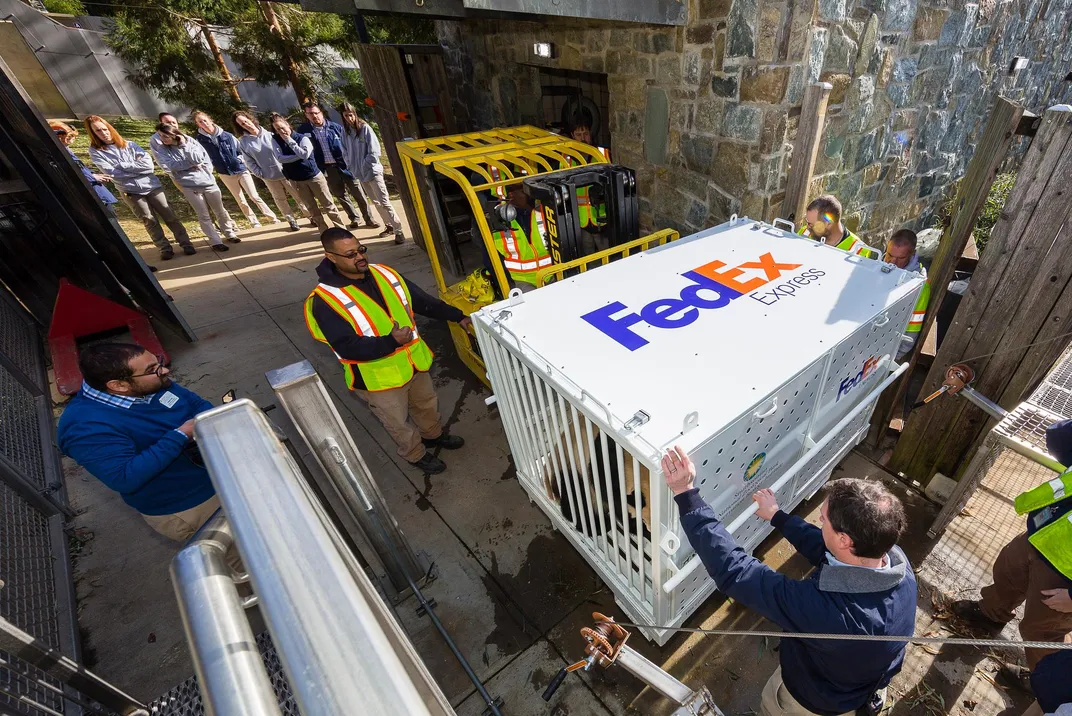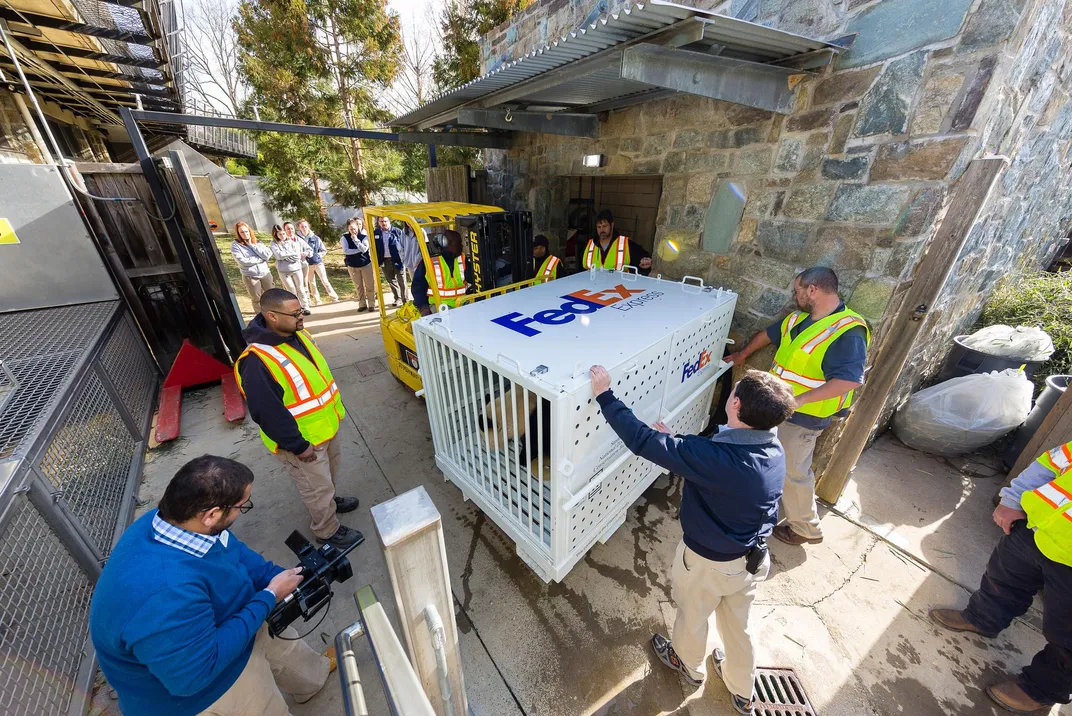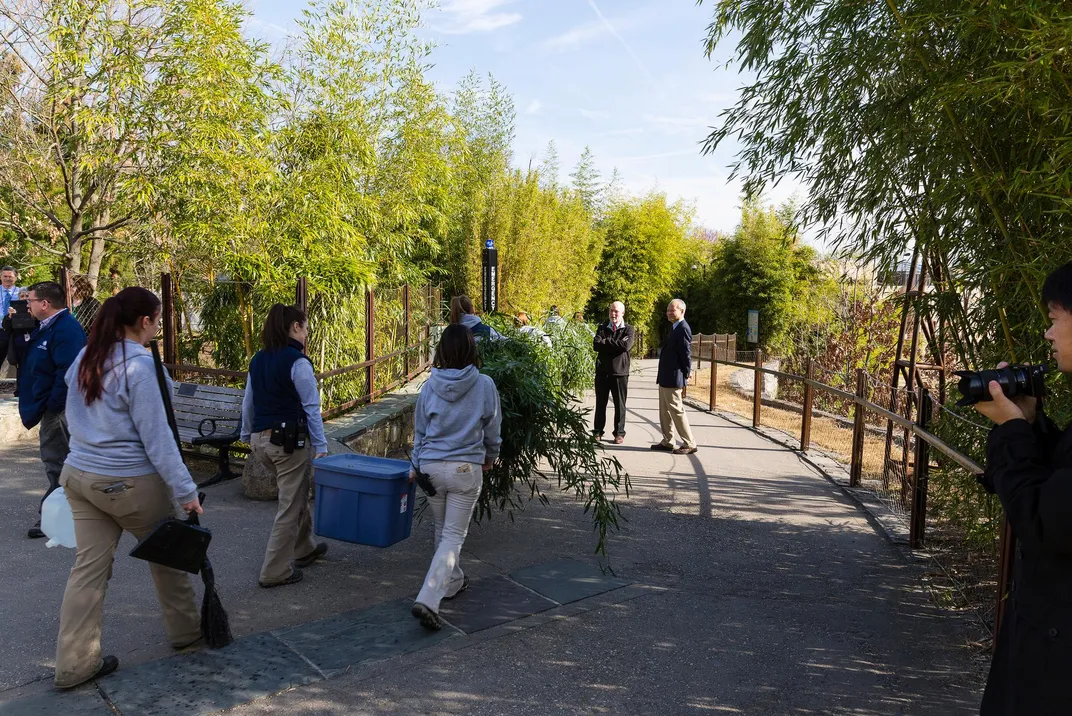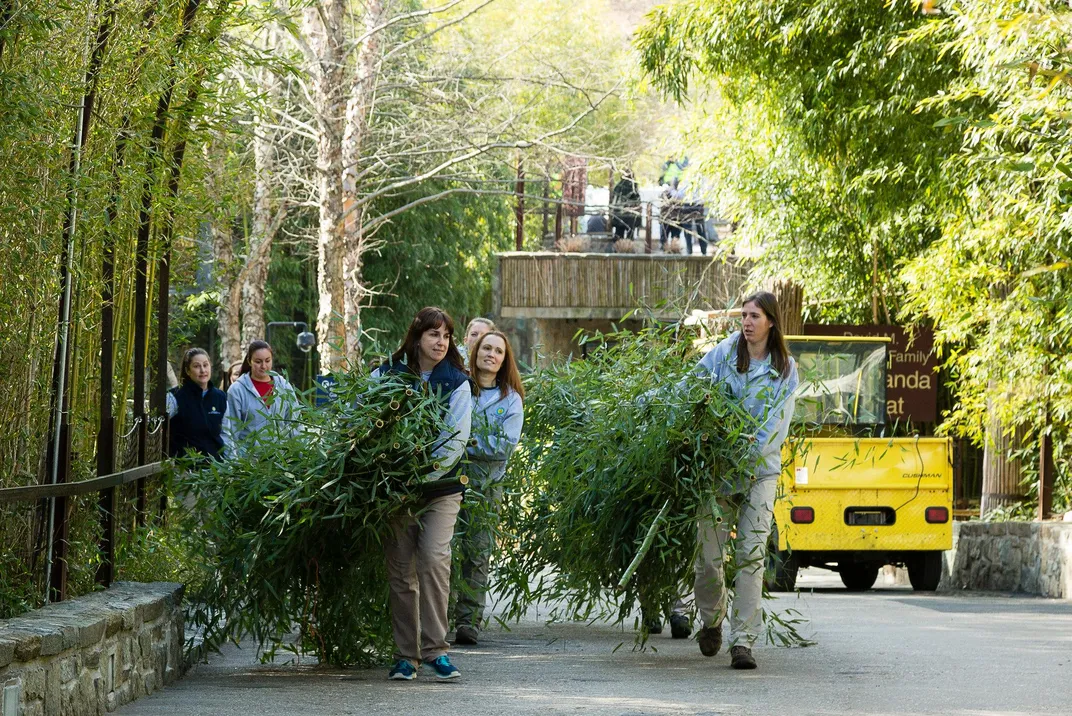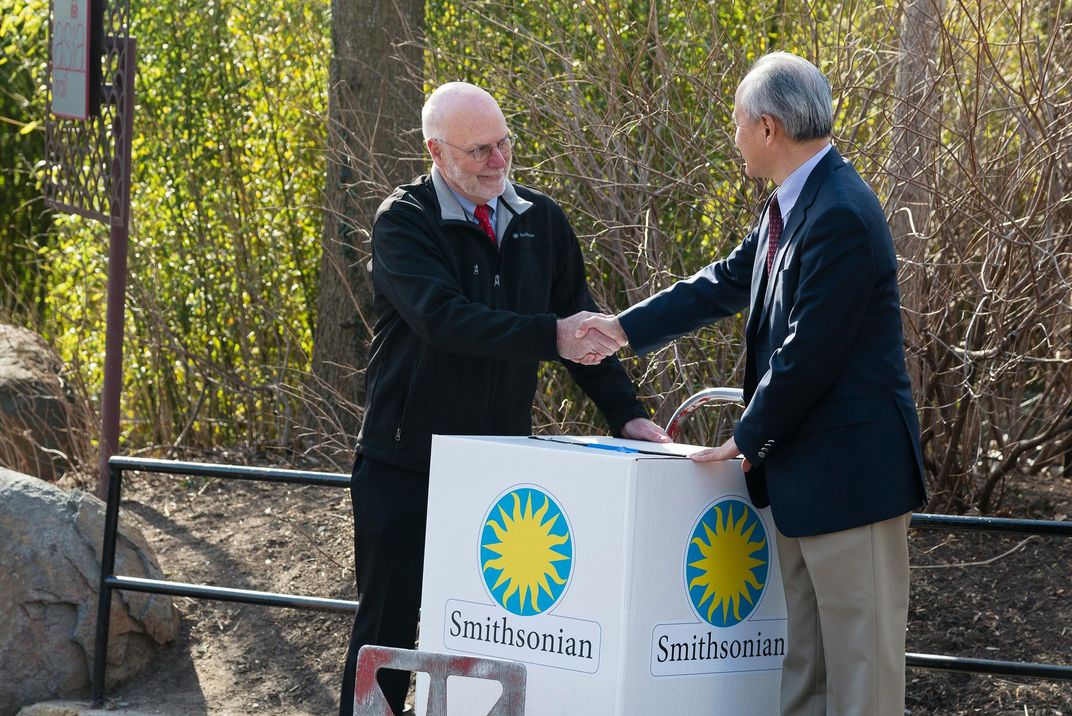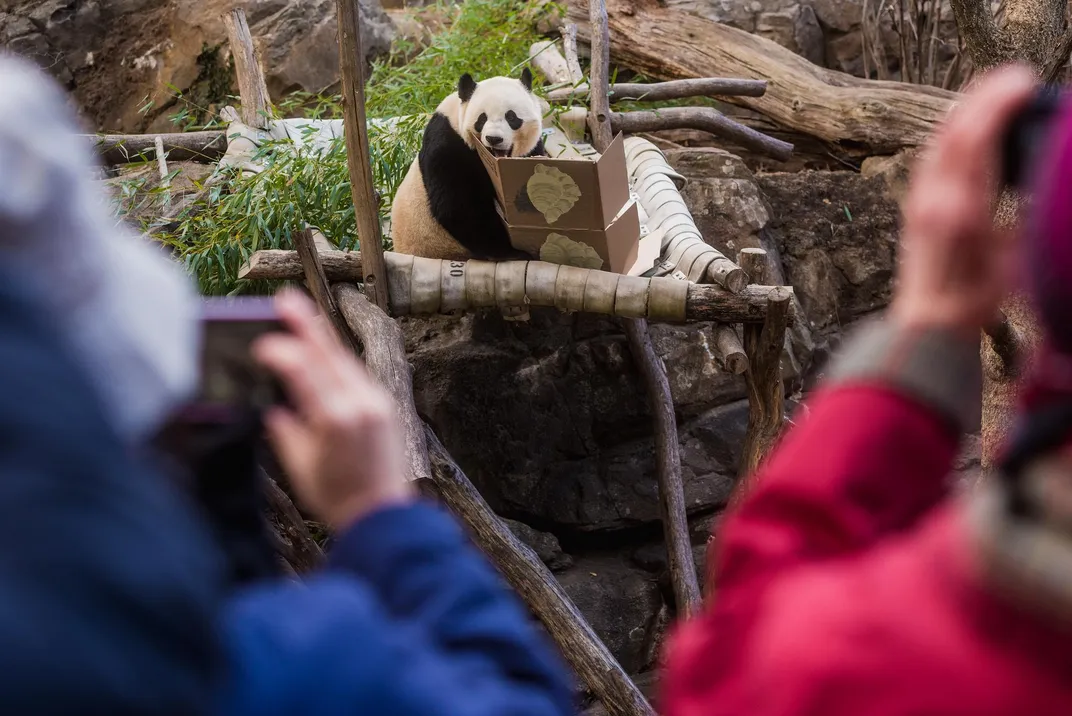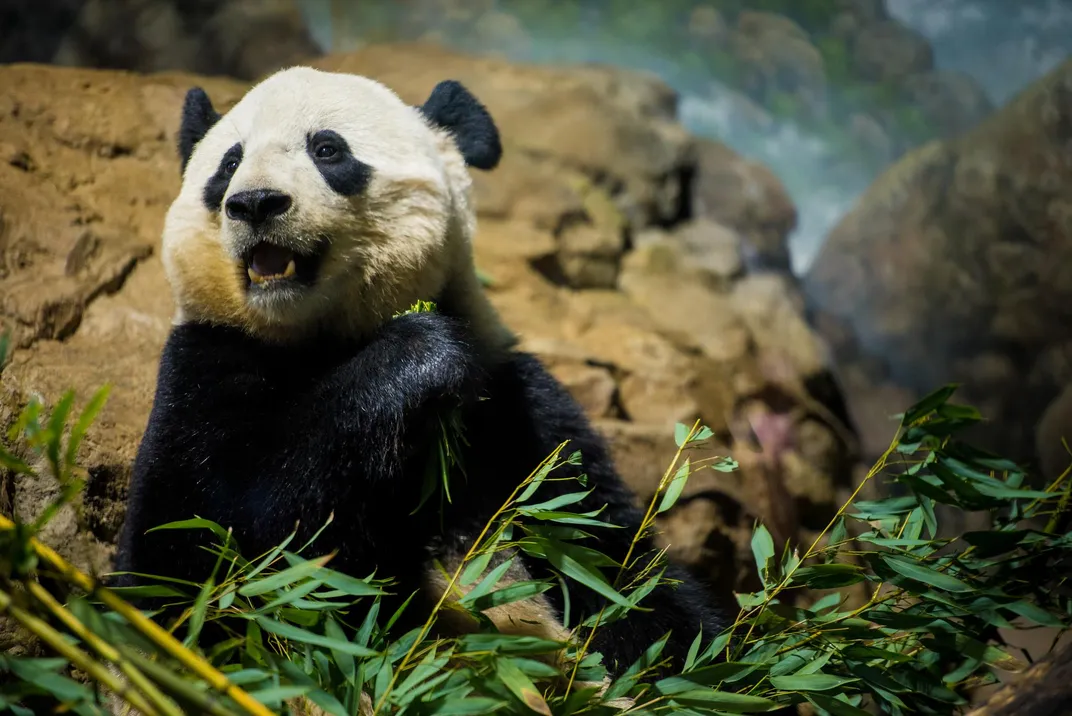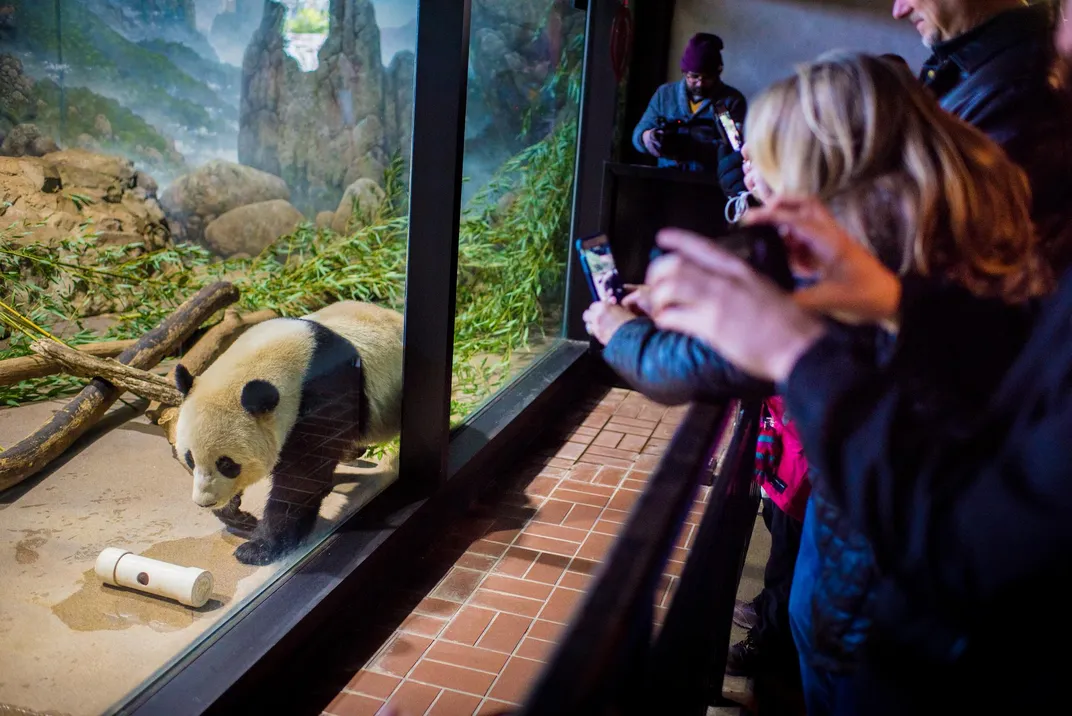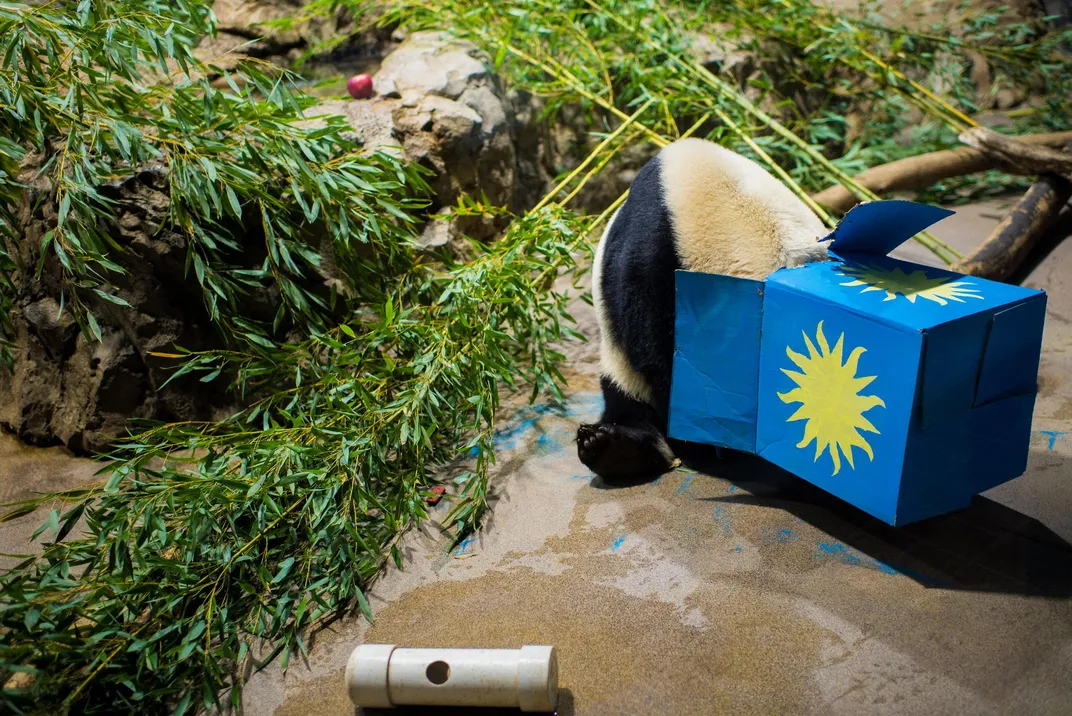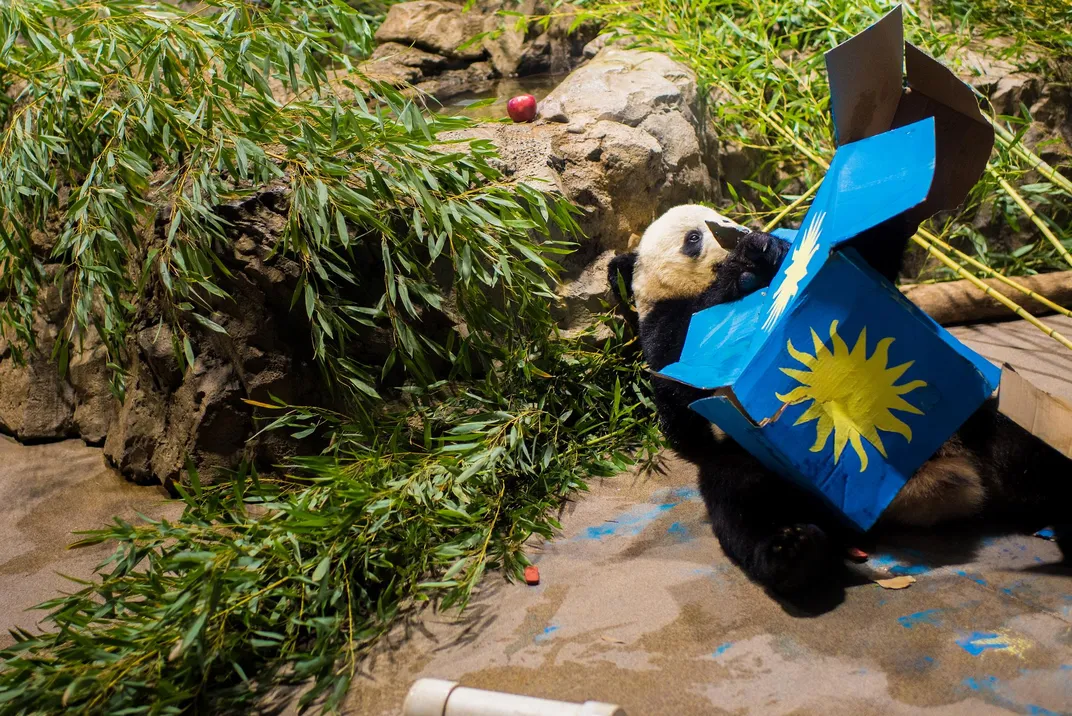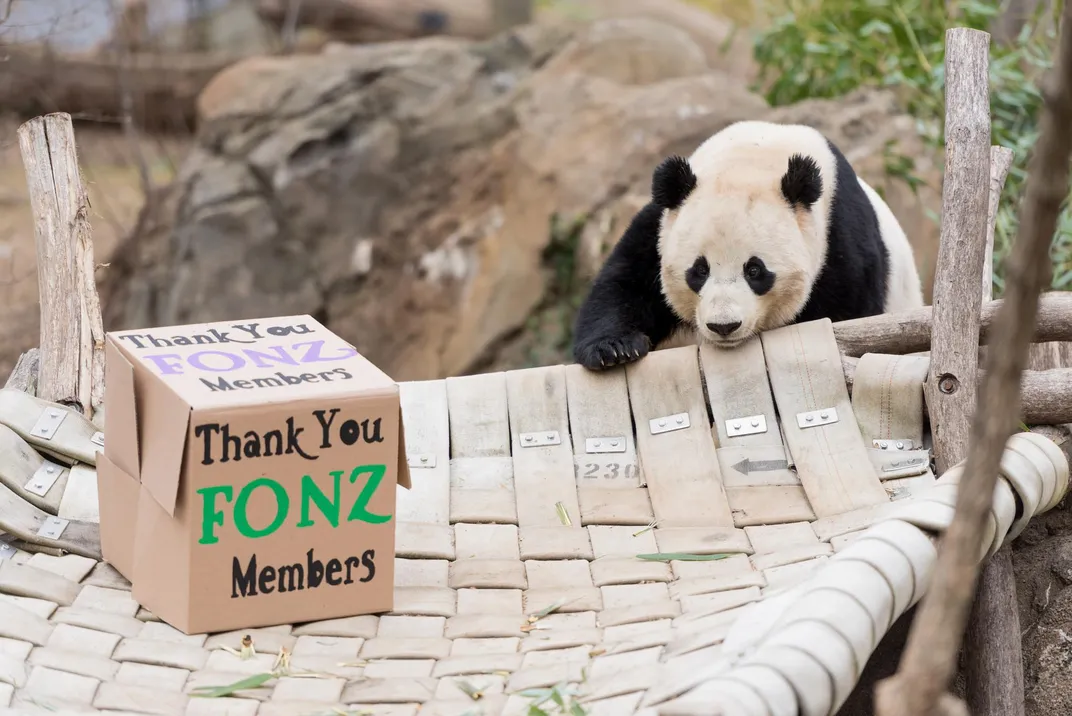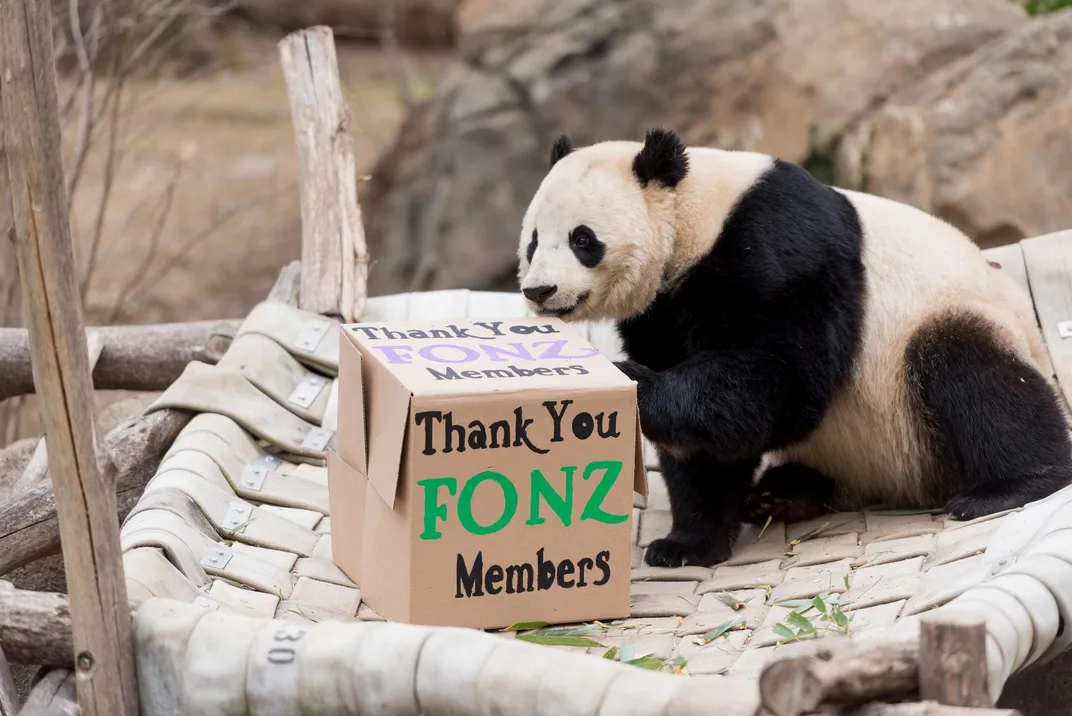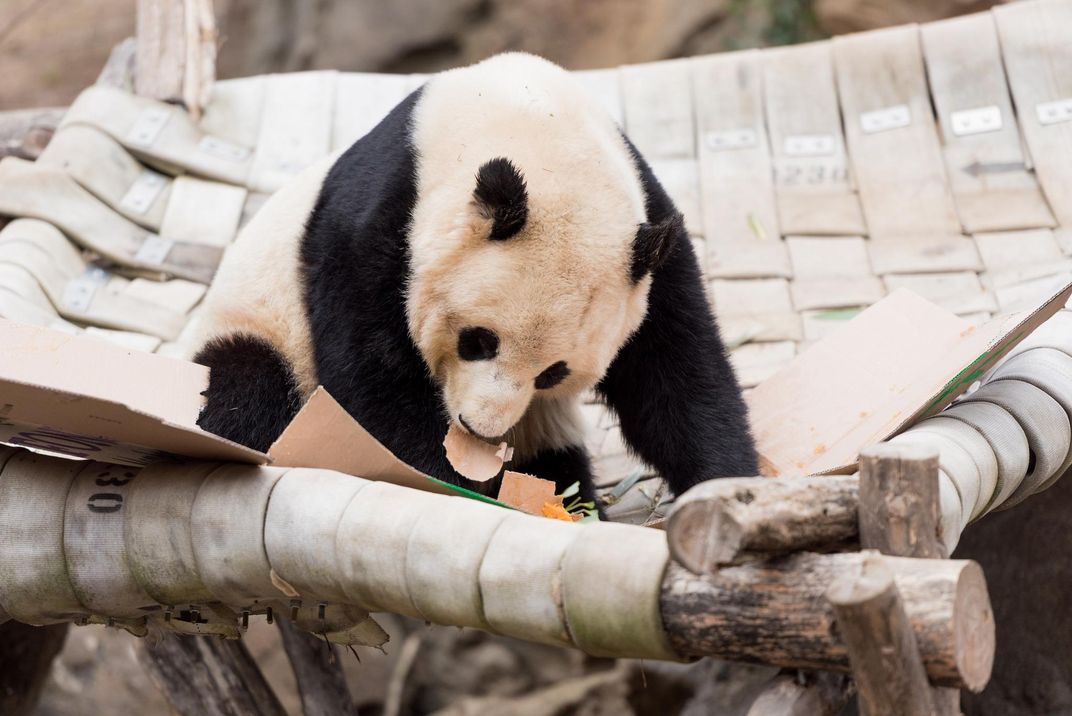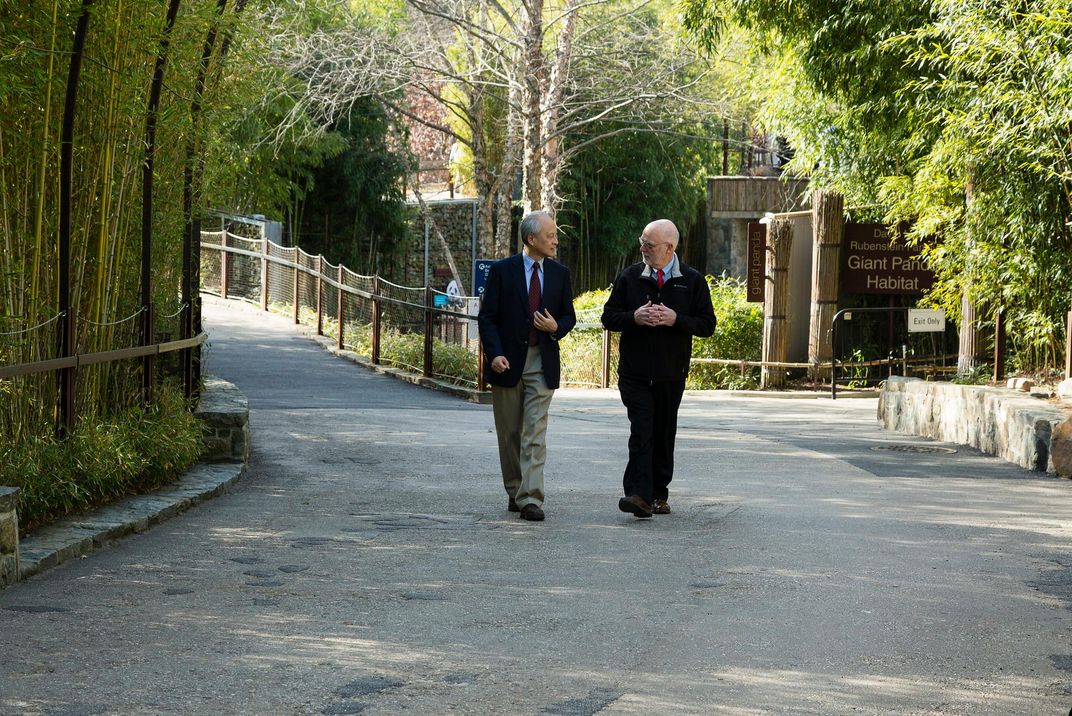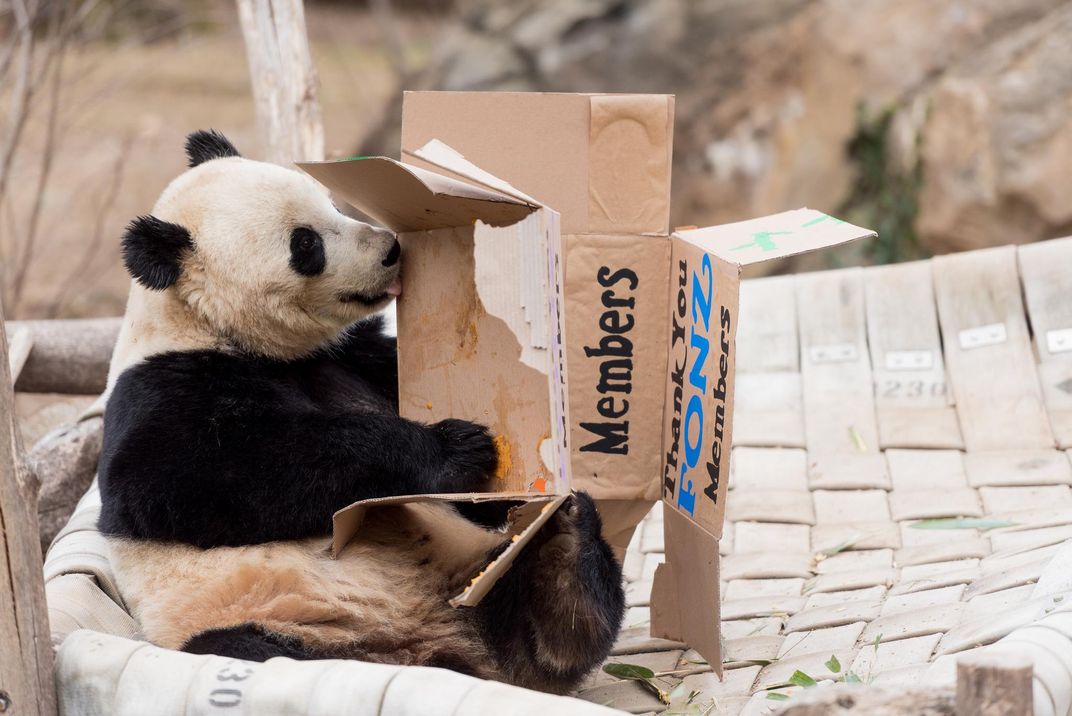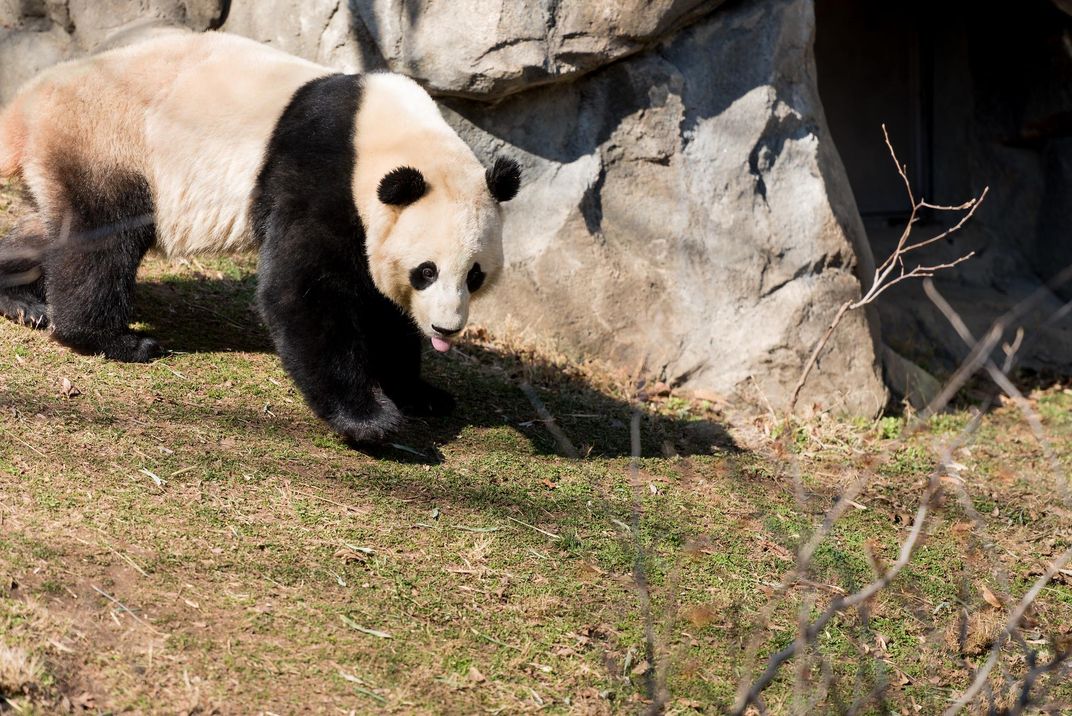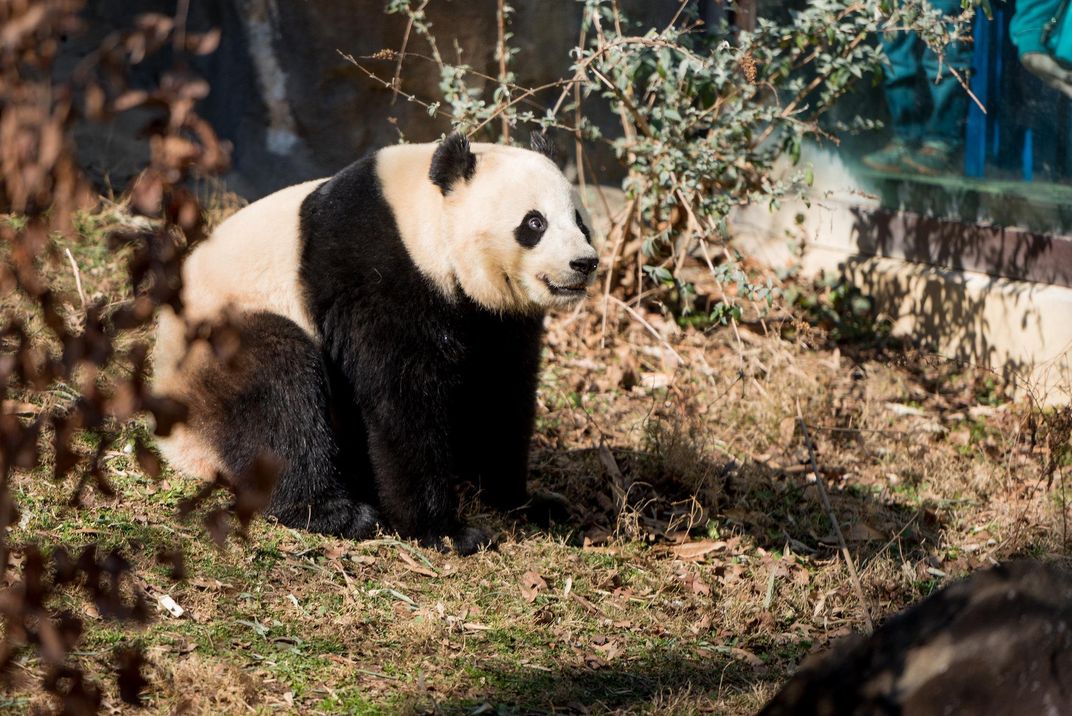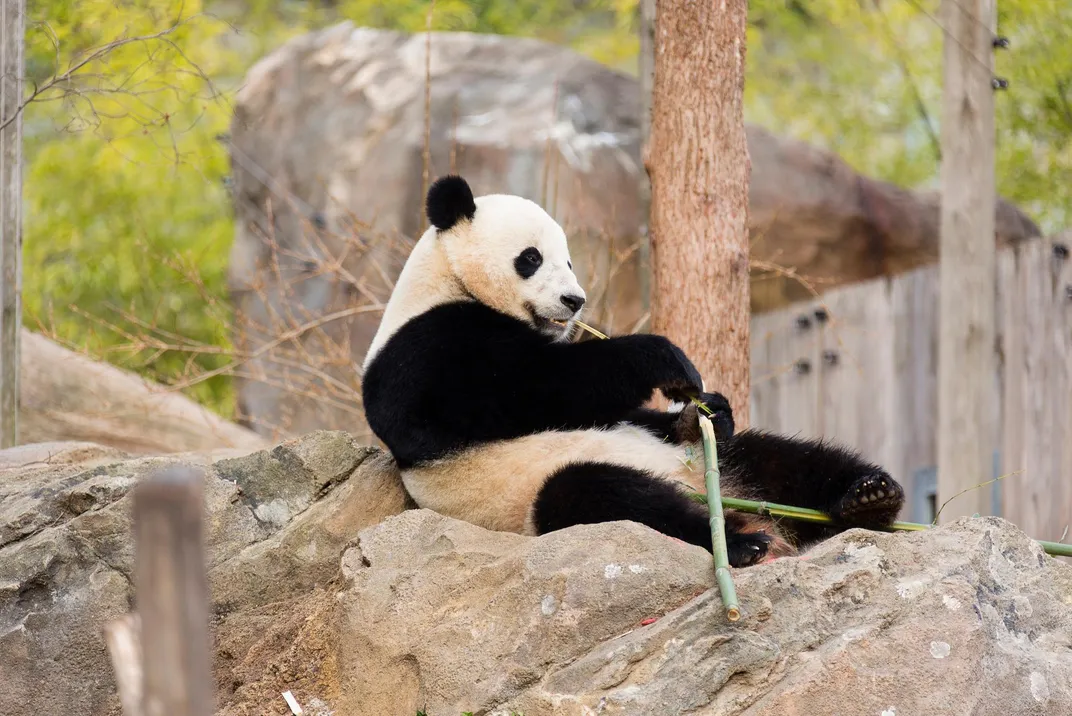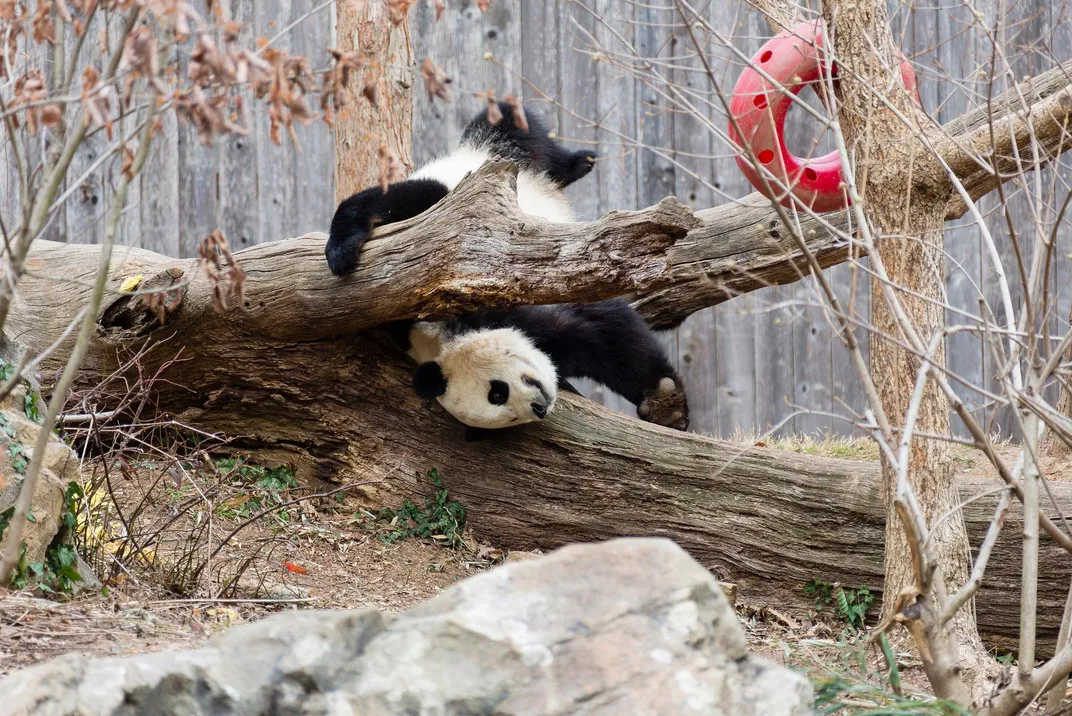Poignant Panda Moments in These Last Photos of Bao Bao
The National Zoo sends its much-loved giant panda home to China
/https://tf-cmsv2-smithsonianmag-media.s3.amazonaws.com/filer/60/d6/60d62c48-239b-4cfa-9f89-41096ae1f65f/32939903725_e2efd97862_k.jpg)
Tuesday morning was Bao Bao’s final one at the Smithsonian National Zoo in Washington, D.C., but for the young giant panda, it might as well have been any other.
In the hours before her departure for Chengdu, China—a trip that she’s making in accordance with the United States and China’s panda loan agreement—she lolled about in her yard, munching on bamboo and rubbing up against tree branches, seemingly oblivious to the photographers and camera operators who surrounded her enclosure.
But for others, those early post-dawn hours were more difficult. “Bittersweet is the best word I can use to describe it,” keeper Stacey Tabellario told me. As someone who has worked with Bao Bao throughout the animal's life, Tabellario has always known that she would have to say goodbye.
“You know it’s going to happen,” she said, before continuing, “But that doesn’t mean there weren’t tears this morning. And that there won’t be more tears later.”
You wouldn’t have known it, though, to watch Tabellario and her fellow keepers as they prepared for Bao Bao’s departure. Together, they carried supplies for the flight—by the official manifest: “50 pounds of bamboo, 2 pounds apples, two bags of leafeater biscuits, cooked sweet potatoes and water”—to a waiting FedEx van, smiling for the surrounding dignitaries and press. There, FedEx personnel loaded it into an AMJ, a sizable aluminum shipping container that large enough to transport food for an entire menagerie.
Soon after, Bao Bao herself passed by, concealed by the perforated white walls of her own enclosure. Weighing hundreds of pounds, this sturdy construction was carried by a bright yellow JCB forklift that had been decorated with an oversized pair of black panda ears and a bushy white tail, as if to make up for the invisibility of the departing star.
Turning a corner, the forklift operator loaded his precious cargo onto a second truck, decorated—like its companion vehicle—with an enormous panda decal.
Though much of this phase of the operation unfolded out of sight, what followed was visible to all. A group of panda keepers surrounded Marty Dearie, who would be accompanying Bao Bao on her 16-hour flight to Chengdu, along with a veterinarian from the Zoo. One after the next, each of them hugged Dearie. “We are a very strong team,” Tabellario told me when I asked her about this seemingly impromptu ritual later. “As much as we love the animals, we all love each other too.”
Not long after, the two trucks pulled out, heading to Washington’s Dulles Airport. There, a similar ceremony played out, less the panda keepers and the monochromatically-decorated forklift. From a podium, Dennis Kelly, director of the Zoo addressed the importance of Bao Bao’s trip, stressing that it was critical to give her the opportunity to reproduce and propagate her still-imperiled species. Connecting these efforts to everything the Zoo does, Kelly told the assembled crowd, “Saving species is a forever business.”
It was an apt phrase with not least of all because life was presumably preceding as usual back at the Zoo. Though the grounds had been closed for the morning departure, other keepers were looking after other animals behind the scenes, as they would be on any other day.
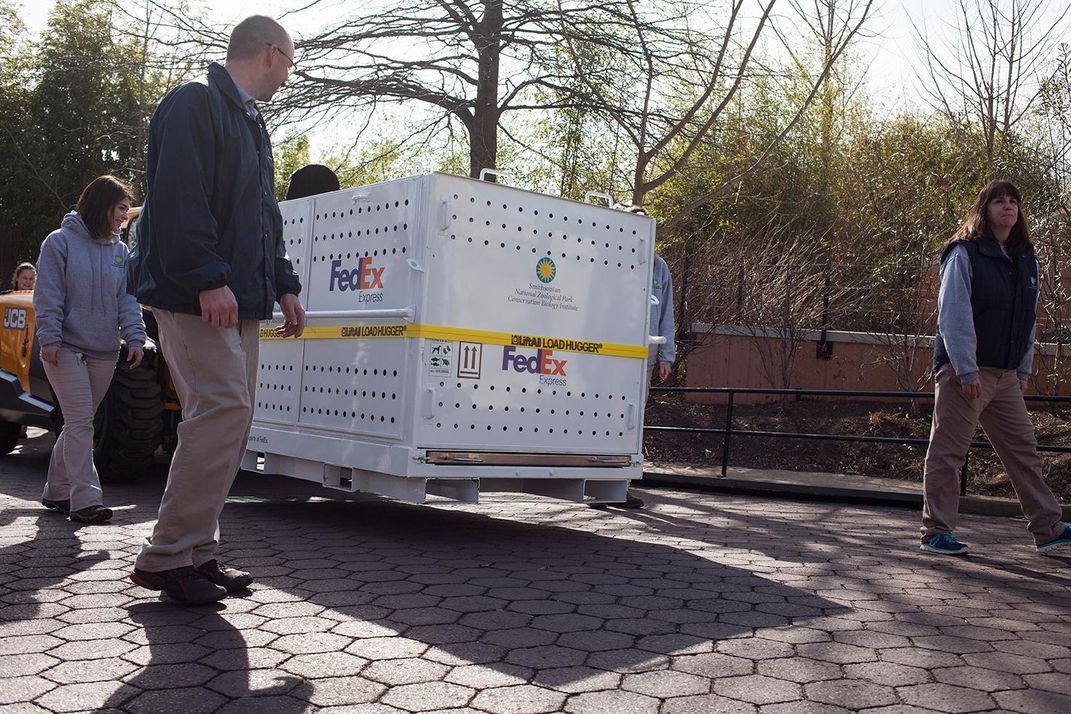
Things will change for the pandas, to be sure, but the three who remain at the Zoo likely won’t notice Bao Bao’s departure any more than she did the hullabaloo that preceded it. If anything, they may enjoy the change, if only because the younger Bei Bei, already on the verge of weaning from her mother, will soon move into Bao Bao’s now vacant yard. And before long, Mei Xiang may be pregnant again, a prospect that presents both new challenges and exciting new opportunities for the Zoo.
Thinking of the work ahead, Tabellario shook her head fondly. “There’s no rest for a panda team,” she said, smiling.
